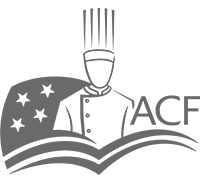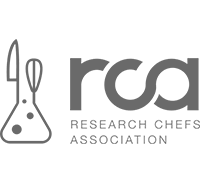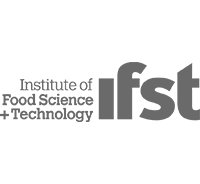Helmsman Group
Baby Foods: The Non-Negotiable Category in Cost-Conscious Times
The baby food market does not only sustain through times of uncertainty, but continue to grow. When economic pressures force households to reassess spending priorities, baby and infant nutrition consistently demonstrates remarkable resilience. As our research confirms, parents view their children’s nutrition not as a discretionary expense but as a fundamental necessity, creating sustained demand for high-quality baby food products regardless of broader economic conditions.
By Mark Haas
June 17, 2025
The “New Parent” Paradigm: A Data-Driven Analysis
The millennial and Gen Z parenting demographic has fundamentally transformed the baby food category. Straits Research data shows that 82% of new parents prioritize nutritional quality and ingredient transparency above all other factors – including price – when selecting baby foods¹:
Clean label dominance: Products featuring organic certification and “free from” claims have captured 67% of category growth despite price premiums of 35-40%, according to Innova Market Insights²
Safety-driven decisions: Concerns about contaminants and preservatives drive 73% of parents to select premium options, with willingness-to-pay metrics showing minimal price sensitivity, based on research from the Organic Trade Association’s infant nutrition report³
Subscription resilience: Baby food subscription services maintained an 88% retention rate during recent inflation periods, outperforming most other CPG categories, as documented by McKinsey’s Consumer Pulse survey⁴
How Mid-Market Brands Can Win
The pandemic era offers instructive examples of agile response in this category. Consider Little Harvest, a mid-sized baby food brand that faced the same supply disruptions as category leaders in early 2020:
While industry giants struggled with import restrictions and ingredient shortages, Little Harvest successfully pivoted by:
-
Prioritizing transparency with real-time updates on sourcing and production
-
Establishing new relationships with regional organic farms at comparable costs to previous international suppliers
-
Implementing QR code traceability allowing parents to verify ingredient sources
-
Simplifying formulations to focus on nutrient-dense basics with proven demand
The results were compelling: while the category saw 9% growth during this period (per IRI data⁵), Little Harvest achieved 31% growth, expanded distribution by 180 stores, and maintained premium pricing—all while building unprecedented consumer trust.
Strategic Opportunities for Mid-Market Executives: Adopting the Startup Mindset
For CPG leaders navigating today’s market volatility, the baby food category offers distinct strategic advantages:
Supply Chain Transparency
Unlike categories where sourcing remains opaque to consumers, baby food brands can transform transparency into a competitive advantage. Regional sourcing networks not only improve resilience but create authentic brand narratives that resonate deeply with parents.
Innovation That Builds Trust
Successful baby food brands are discovering that innovation isn’t about novelty but rather about aligning with core parental concerns:
-
Full ingredient traceability systems that demonstrate accountability
-
Stage-specific nutritional formulations based on developmental milestones
-
Sustainable packaging solutions that address parental environmental concerns
Premium Positioning Through Education
Even price-sensitive parents demonstrate remarkable loyalty to brands perceived as educational partners. Brands that provide developmental guidance alongside nutritional information command premium pricing while building enduring relationships.
Market Outlook: 2025 and Beyond
Looking ahead, several trends will shape opportunities in the baby food category:
-
Personalization by developmental stage: Technologies enabling customized nutritional recommendations based on developmental milestones are gaining traction, according to Mintel’s “Future of Infant Nutrition” report⁶
-
Plant-forward protein diversification: Parent acceptance of diverse protein sources is accelerating, creating innovation opportunities in plant-based and alternative protein formats, as documented in Euromonitor’s category analysis⁷
-
Direct-to-parent distribution models: Brands that seamlessly integrate subscription services with educational content demonstrate superior retention rates, according to Bain & Company’s “Consumer Health” research⁸
The Startup Mindset: Iterative Adaptation
As our original article emphasized, mid-market CPG brands that adopt startup-style rapid iteration find particular success in the baby food category. The high stakes of infant nutrition create unparalleled consumer engagement, a phenomenon validated by the Infant Nutrition Council’s industry research⁹.
Consider implementing:
-
8-week testing cycles with parent advisory panels
-
Digital feedback communities providing real-time insights on concepts:
-
Small-batch production capabilities that enable rapid response to emerging nutritional science
This approach aligns with what Food Navigator has identified as the “agile nutrition paradigm”—the practice of rapidly incorporating emerging nutritional science into product development, creating a continuous innovation advantage¹⁰.
Strategic Imperatives
The baby food category’s resilience during economic uncertainty offers mid-market CPG executives a pathway to growth even in challenging conditions. Brands that embrace transparency, nutritional authority, and meaningful innovation can convert market turbulence into competitive advantage.
The key lies in understanding that parents don’t simply purchase baby food—they invest in their child’s development and future wellbeing. Brands that authentically connect with this fundamental motivation find themselves not just surviving market volatility, but thriving through it.
References
-
Straits Research. (2024). “Baby Food Market Segmentation and Consumer Behavior Analysis.” Industry Report.
-
Innova Market Insights. (2024, February). “Clean Label Trends in Infant Nutrition.” Market Analysis Report.
-
Organic Trade Association. (2025, January). “Organic Baby Food Market Report.” Industry Analysis.
-
McKinsey & Company. (2024, December). “Consumer Pulse: Spending Priorities During Economic Uncertainty.” Market Research.
-
Information Resources Inc. (IRI). (2021). “CPG Baby Category Performance During COVID-19.” Market Intelligence Report.
-
Mintel Group Ltd. (2024, March). “The Future of Infant Nutrition 2024-2029.” Global Food and Drink Trends.
-
Euromonitor International. (2024). “Plant-Based Innovation in Infant Nutrition.” Industry White Paper.
-
Bain & Company. (2024, April). “The Future of Consumer Health: Infant Nutrition Segment.” Retail Practice.
-
Infant Nutrition Council. (2024). “Consumer Engagement and Product Innovation.” Industry Research Consortium.
-
Michail, N. (2024). “The Agile Nutrition Paradigm in Infant Foods.” Food Navigator, 45(3), 28-34.






